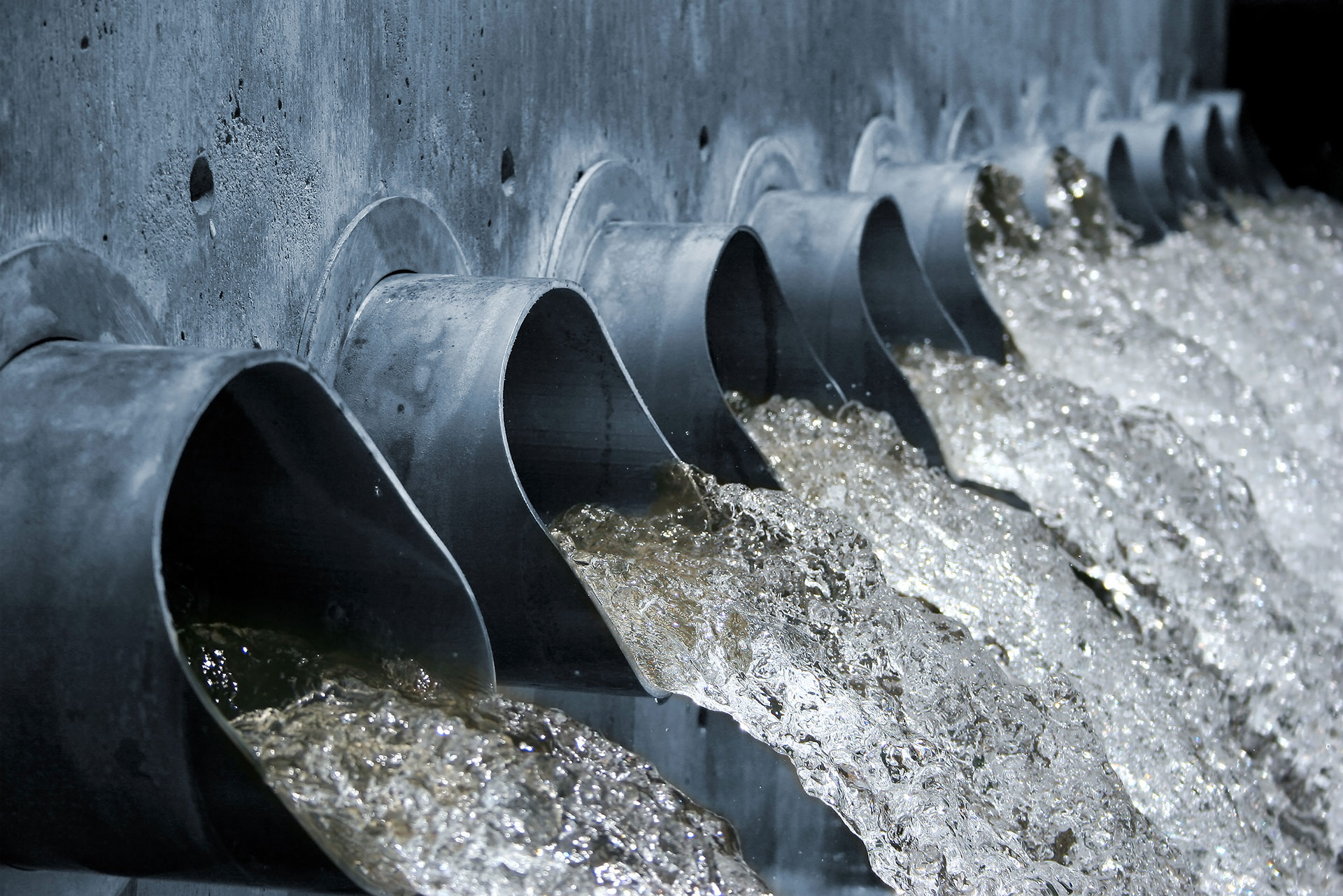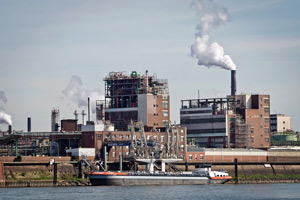Industrial Waste Water Treatment-- Lasting Solutions for Industrial Water Administration
Industrial Waste Water Treatment-- Lasting Solutions for Industrial Water Administration
Blog Article
Trick Methods in Industrial Waste Water Therapy Processes
The therapy of industrial wastewater is an important facet of ecological administration, entailing a variety of methods created to minimize the impact of pollutants. From the fundamental physical methods that divide solids to the advanced chemical and biological procedures that target particular pollutants, each strategy plays an important role in accomplishing water quality standards. Developments in innovations such as membrane filtration and progressed oxidation processes use innovative options for boosting treatment efficiency. Comprehending just how these methods interconnect and their ramifications for sustainability elevates important concerns regarding the future of wastewater monitoring in industry.
Physical Treatment Techniques
Exactly how efficiently can physical treatment techniques deal with the complexities of industrial wastewater? Physical treatment methods play a critical role in the preliminary stages of wastewater management, concentrating largely on the elimination of solids and huge particulates. Strategies such as flotation protection, filtering, and sedimentation are necessary for minimizing the focus of suspended solids, thereby enhancing the performance of succeeding treatment procedures.
Sedimentation entails the gravitational settling of solids, permitting for the separation of heavier products from the wastewater. This technique is especially effective in making clear water before biological or chemical therapies. Filtering, on the various other hand, uses various media to record particle matter, making sure that smaller impurities are eliminated. This strategy can be customized to accommodate different types of commercial effluents, creating clearer effluent streams.
Furthermore, flotation techniques, which utilize air bubbles to raise put on hold solids to the surface for elimination, work in dealing with wastewater with high concentrations of fats, oils, and greases. Overall, physical therapy methods function as a crucial initial step in the detailed monitoring of industrial wastewater, making certain that the load on succeeding therapy stages is lessened and boosting general therapy efficacy.
Chemical Treatment Methods
While physical treatment approaches lay the foundation for efficient wastewater management, chemical treatment methods are necessary for dealing with the more complicated contaminants usually discovered in commercial effluents. These techniques make use of different chemical representatives to precipitate, counteract, or oxidize damaging materials, making sure a more thorough elimination of pollutants.
One typical approach is coagulation and flocculation, where chemical coagulants such as light weight aluminum sulfate or ferric chloride are added to promote the gathering of suspended bits. This procedure boosts solid-liquid splitting up, decreasing turbidity and boosting water quality. Furthermore, neutralization procedures are employed to adjust the pH of wastewater, utilizing bases or acids to neutralize acidic or alkaline streams, specifically.
Oxidation-reduction responses play an essential function in derogatory natural contaminants and microorganisms. Chemical oxidants like chlorine, hydrogen, or ozone peroxide are used to damage down intricate organic substances, making them much less damaging or a lot more eco-friendly. Furthermore, advanced oxidation processes (AOPs) integrate several oxidation strategies to boost toxin elimination effectiveness.
Biological Treatment Procedures
The performance of wastewater treatment is dramatically boosted by biological therapy procedures, which harness the all-natural metabolic tasks of microbes to decay raw material and get rid of toxins. Industrial Waste Water Treatment. These procedures mostly include anaerobic and cardiovascular digestion, each tailored for specific sorts of wastewater
Cardio therapy procedures use oxygen to support microbial growth, advertising the malfunction of natural contaminants into carbon dioxide and water. Usual approaches include turned on sludge systems, where oygenation storage tanks help with the mixing of wastewater with microorganisms, and flowing filters, which motivate biofilm development on media surface areas.
Conversely, anaerobic therapy processes occur in the lack of oxygen, using anaerobic bacteria to decay natural matter, causing biogas production, a renewable resource source. Anaerobic digesters are often used in industrial setups for this function, effectively lowering the volume of sludge while creating important biogas.
The option of a biological therapy technique relies on wastewater attributes, treatment objectives, and regulatory requirements. The integration of organic processes in wastewater treatment not only boosts toxin removal efficiency yet also advertises sustainability by minimizing chemical use and sustaining resource healing.
Advanced Oxidation Processes

Typical AOP strategies include Fenton's reagent, ozonation, and photocatalysis. Fenton's reagent, a combination of hydrogen peroxide and ferrous iron, militarizes the development of hydroxyl radicals, making it effective for treating wastewater consisting of phenolic compounds and other stubborn substances.
AOPs offer several advantages, consisting of lowered sludge production and the ability to deal with wastewater with high concentrations of organic contaminants. Nonetheless, the execution of AOPs requires careful consideration of operational specifications and cost-effectiveness, ensuring that these advanced methods are properly incorporated right into existing wastewater therapy systems.
Membrane Filtration Technologies

Microfiltration works for removing suspended germs and solids, while ultrafiltration targets smaller sized natural molecules and viruses. Nanofiltration bridges the space between ultrafiltration and reverse osmosis, successfully getting rid of divalent ions and organic compounds. Reverse osmosis provides the highest degree of filtration, made use of largely for desalination and getting rid of mono-valent ions.
Membrane layer modern technologies use various benefits, consisting of low power consumption contrasted to traditional treatment methods, modular design for scalability, and the potential for water recovery and reuse. Difficulties such as membrane fouling and the need for regular upkeep have content to be resolved to make sure system effectiveness. Generally, membrane filtration modern technologies stand for a crucial element of contemporary industrial wastewater therapy methods, promoting sustainability and source preservation in water administration.
Final Thought
In final thought, industrial wastewater therapy uses a diverse range of strategies, including physical, chemical, organic, and advanced techniques. Proceeded advancements in these methods will certainly even more boost the efficiency and effectiveness of wastewater Web Site therapy procedures in commercial settings.
The treatment of commercial wastewater is an important facet of environmental administration, entailing a range of techniques created to minimize the impact of contaminants.Exactly how successfully can physical therapy approaches address the complexities of industrial wastewater?Advanced oxidation processes (AOPs) represent an innovative strategy in commercial wastewater treatment, designed to efficiently deteriorate organic pollutants that are typically immune to standard therapy approaches (Industrial Waste Water Treatment).In verdict, commercial wastewater therapy uses a varied variety of strategies, consisting of physical, chemical, organic, and progressed techniques. Continued improvements in these methods will even more enhance the effectiveness and effectiveness of wastewater treatment processes in commercial setups
Report this page